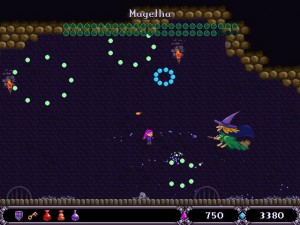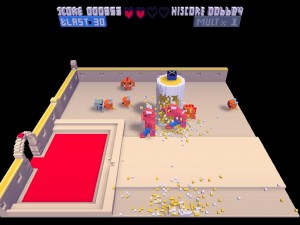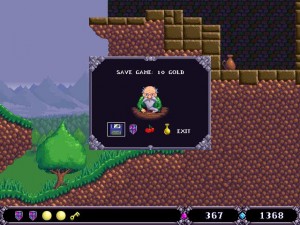Runespell: Finale
Well, it turns out that I had finished a larger fraction of the game than I had thought. Just a few more hours sufficed to finish it; I probably could have polished it off in a single day if I had devoted the time to it. It turns out that the game does not, in fact, expand on the rules as I described them, and the two layers of the game, the combat-and-spellcasting system and the card game, don’t interact much.
Mind you, they do interact a little more than I thought they did in my last post. In addition to doing damage, the card game feeds your mana, or, as the game calls it, “rage points”. You start with no rage at all, but every time either player strikes a normal blow (that is, every time either side uses a poker hand, as opposed to casting a spell), both sides gain some rage points, the attacker getting significantly more than the defender. This gives you an extra incentive to hold off on using your accumulated attacks until you’re sure that the resulting rage boost won’t give the opponent an advantage.
Going in the other direction, there’s one suite of spells that directly affects how the card game plays: Fate spells give you extra action points, letting you do more card-rearrangement in a turn that you’d normally be able to. This has a significant enough effect that I relied on it heavily in the endgame battles. There’s a gimmick, repeated twice, of bosses with tons of hit points, which can only be brought down to defeatable levels by means of a special spell that costs your maximum rage to cast. The obvious approach there is to just hoard your rage until you have enough, but on the second such boss, I found this inadequate. Spending some rage on a fate spell the moment I had enough turned out to be worth it.
That’s about it as far as gameplay of interest goes. I do think there’s room for a richer game within this ruleset. What if some enemies had spells that could alter the cards, changing their suit or rank? What effect would wild cards have? What if an enemy were immune to damage from hands based on matching ranks (the easiest sort of hand to make), and could only be defeated with straights and flushes? There’s one fight in Runespell: Overture where you’re not allowed to cast spells, but other than that, it doesn’t really explore this stuff. Well, at least it doesn’t try to drag things out. It knows about how long the rules as given can maintain the player’s interest. Also, as you might have guessed from the title, this is supposedly just the first chapter of the story. If further chapters get made, maybe we’ll see more variety.
 Comments(0)
Comments(0)


